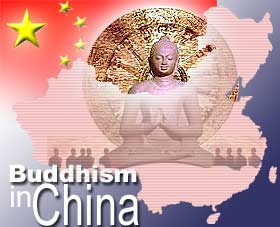ബുദ്ധ മതത്തിലെ കേന്ദ്ര ബിന്ദു:
"അനിത്ത്യ",ദു:ഖം, "അനാത്മ" തത്ത്വം.
============================

ബുദ്ധ മതത്തിലെ കേന്ദ്രവും അതിൻറെ പ്രായോഗികമായ സ്വഭാവ രഹസ്യവും അനിച്ചം(അനിത്യം), അനത്ത(അനാത്മ), ദു:ഖം എന്ന മൂന്ന് തത്വങ്ങളിൽ സ്ഥിതി ചെയ്യുന്നു.
ഈ കേന്ദ്രങ്ങളിലേക്ക് നയിക്കുന്ന മാർഗ്ഗമാണ് ബുദ്ധൻ അരുളി ചെയ്ത പഞ്ചസ്കന്ധ സിദ്ധാന്തം .
രാജ പദവിയും ഭൌതിക സുഖങ്ങളും ഉപേക്ഷിക്കാൻ ബുദ്ധനെ പ്രേരിപ്പിച്ച ഘടകങ്ങളിൽ പ്രധാനമായ ഒന്ന് ഈ ലോകത്തിന്റെ അനി ത്യത തന്നെ .ഭോഗങ്ങളെല്ലാം എല്ലാം ക്ഷണികം എന്ന് പ്രകൃതിയുടെ ഗതി വിഗതികൾ നോക്കികണ്ട അദ്ദേഹം അറിഞ്ഞിരുന്നു.
ശു ദ്ധോദന രാജാവ് സ്വ പുത്രനെ ഭൌതിക സുഖ വൈരാഗ്യ ബുദ്ധിയിൽ നിന്ന് പിന്തിരിപ്പിക്കാൻ ശ്രമിച്ചപ്പോൾ ബോധിസത്വനായ സിദ്ധാർത്ഥൻ പറഞ്ഞ വാക്കുകൾ അദ്ദേഹത്തിൽ വെരൂന്നിയിരുന്ന അനിത്യ ബോധത്തെ വെളിവാക്കുന്നു."നം വളർന്നു വാർധ്യക്യത്തിലും ജരാ മരണാധിയിലും പരിണമിക്കാതിരിക്കുമെങ്കിൽ ഞാൻ ഭിക്ഷു വൃത്തി സ്വീകരിക്കുകയില്ല".
പ്രകൃതിയുടെ നിശിതമായ നിയമങ്ങൾ പദാർത്തങ്ങളെ സദാ മാറ്റിമറിച്ചുകൊണ്ടിരിക്കുന്നു .ആ നിയമങ്ങളിൽ നിന്നും ഒരു വസ്തുവിനും ഒഴിഞ്ഞു നിൽക്കാൻ സാധ്യമല്ലെന്ന് സാരം.
ബുദ്ധ ദർശനത്തിന്റെ വ്യാപ്തി ഇവിടെ ഒതുങ്ങുന്നില്ല. മനോവിചാരങ്ങൾ പ്രതിനിമിഷം ഇളകി മറിഞ്ഞുകൊണ്ടിരിക്കുന്നു.മനസ്സിൽകൂടി കടന്നുപോകുന്ന ചിന്തകളുടെ എണ്ണവും തള്ളലും നോക്കിയാൽ നമ്മുടെ ഓരോരുത്തരുടെയും സംഘർഷങ്ങൾ വ്യക്തമാകും.ബുദ്ധമത സിദ്ധാന്തമാനുസ്സരിച്ച് മാറ്റങ്ങൾ കൂടാതെ നിത്യമായി നിലനിൽക്കുന്ന പദാർത്ഥങ്ങൾ ഇല്ലെന്ന് മാത്രമല്ല ഒരു പദാർത്ഥങ്ങളും തുടർച്ചയായി രണ്ടു നിമിഷങ്ങൾ തികച്ചും നിലനില്ക്കുന്നില്ല .ഓരോ ക്ഷണത്തിലും പദാർത്ഥങ്ങൾ നശി ക്കുന്നു .അതും മിച്ചമായി യാതൊന്നും അവശേഷിക്കാത്ത വിധം നാശമടയുന്നു.ഇത്തരത്തിലുള്ള നാശത്തിന് ബുദ്ധ ദാർശനികന്മാർ കൊടുത്ത പേര് "നിരന്വയ" നാശമെന്നാണ് .
അനിത്യത എന്ന ബൗദ്ധ സിദ്ധാന്തം ആധുനിക ശാസ്ത്ര സരണിയോട് നന്നേ ഇണങ്ങുന്നു .ബുദ്ധ ഭഗവാൻറെ "അദീത്ത പയ്യായ സൂത്ത"ത്തിൽ എല്ലാ പദാർത്തങ്ങളും തീ പിടിച്ചപോലെ എരിയുന്നു എന്ന് ബുദ്ധ ഭഗവാൻ പ്രസംഗിച്ചതായി രേഖപെടുത്തിയിട്ടുണ്ട് .
കളിമണ്ണിൽ നിന്നും കലമോ, വിത്തിൽ നിന്നും മുളയോ ഉണ്ടാകുമ്പോൾ നാം ധരിക്കുന്നത് രൂപഭേദം വന്നെങ്കിലും മുൻപുണ്ടായിരുന്ന ദ്രവ്യങ്ങൾ കാര്യ ദ്രവ്യത്തിൽ (കലത്തിലും ,മുളയിലും) തുടരുന്നു എന്നാണ് .എന്നാൽ ഈ ധാരണ തെറ്റാണെന്ന് ബൗദ്ധ ദർശനം ഉപദേശിക്കുന്നു .സാദൃശ്യം കൂടുതലായി ഉള്ളതുകൊണ്ട് കാരണ ദ്രവ്യമായ മണ്ണ് കലമായും ,വിത്ത് മുളയായും എന്ന് നമുക്ക് തോന്നുന്നുവെന്നേയുള്ളു.ഒഴുകി കൊണ്ടിരിക്കുന്ന നദിയുടെയോ, കത്തിയെരിയുന്ന ദീപത്തിന്റെയോ നില മാത്രമേ ഉള്ളു മറ്റു ദ്രവ്യങ്ങൾക്കും .ഒഴുകുന്ന ഒരേ നദിയിൽ രണ്ടു പ്രാവശ്യം കുളിക്കാൻ കഴിയില്ലെന്ന് ബുദ്ധ ദർശനം ചൂണ്ടികാണിക്കുന്നു.ഓരോ നിമിഷവും നദിയിലെ വെള്ള തുള്ളികൾ മാറികൊണ്ടേ ഇരിക്കുന്നു.ഏതെങ്കിലും ഒരിടത്ത് നദിയിലെ വെള്ളം രണ്ട് സെക്കന്റ് തികച്ചും മാറ്റമില്ലാതെ നിലനില്ക്കുന്നില്ല.കത്തി എരിയുന്ന മെഴുകു തിരിയുടെ നില ഈ സത്യത്തെ കുറേകൂടി വ്യക്തമാക്കും.മെഴുകുതിരി കത്തുമ്പോൾ ഒരേപ്രകാരം കണ്ടുകൊണ്ടിരിക്കുന്നു എന്ന തോന്നലാണ് ഉണ്ടാകുക.പക്ഷെ ഓരോ നിമിഷവും പുതിയ ജ്വാലകളാണ് പ്രകാശിക്കുന്നത് .അതോടൊപ്പം മെഴുകുതിരിയും നശിച്ചുകൊണ്ടിരിക്കുന്നു .
കത്തുന്ന തിരിയുടെ ജ്വാലകൾ ഓരോ നിമിഷവും എപ്രകാരം ഉണ്ടായും നശിച്ചും നിലകൊള്ളുന്നുവോ അതേപോലെയാണ് സകല പദാർത്ഥങ്ങളുടെയും അവസ്ഥയെന്ന് ബുദ്ധ മതത്തിലെ അനിത്യ സിദ്ധാന്തം നമ്മെ ഓർമ്മിപ്പിക്കുന്നു .
....................................
ഹരിദാസ് ബോധ്
"അനിത്ത്യ",ദു:ഖം, "അനാത്മ" തത്ത്വം.
============================

ബുദ്ധ മതത്തിലെ കേന്ദ്രവും അതിൻറെ പ്രായോഗികമായ സ്വഭാവ രഹസ്യവും അനിച്ചം(അനിത്യം), അനത്ത(അനാത്മ), ദു:ഖം എന്ന മൂന്ന് തത്വങ്ങളിൽ സ്ഥിതി ചെയ്യുന്നു.
ഈ കേന്ദ്രങ്ങളിലേക്ക് നയിക്കുന്ന മാർഗ്ഗമാണ് ബുദ്ധൻ അരുളി ചെയ്ത പഞ്ചസ്കന്ധ സിദ്ധാന്തം .
രാജ പദവിയും ഭൌതിക സുഖങ്ങളും ഉപേക്ഷിക്കാൻ ബുദ്ധനെ പ്രേരിപ്പിച്ച ഘടകങ്ങളിൽ പ്രധാനമായ ഒന്ന് ഈ ലോകത്തിന്റെ അനി ത്യത തന്നെ .ഭോഗങ്ങളെല്ലാം എല്ലാം ക്ഷണികം എന്ന് പ്രകൃതിയുടെ ഗതി വിഗതികൾ നോക്കികണ്ട അദ്ദേഹം അറിഞ്ഞിരുന്നു.
ശു ദ്ധോദന രാജാവ് സ്വ പുത്രനെ ഭൌതിക സുഖ വൈരാഗ്യ ബുദ്ധിയിൽ നിന്ന് പിന്തിരിപ്പിക്കാൻ ശ്രമിച്ചപ്പോൾ ബോധിസത്വനായ സിദ്ധാർത്ഥൻ പറഞ്ഞ വാക്കുകൾ അദ്ദേഹത്തിൽ വെരൂന്നിയിരുന്ന അനിത്യ ബോധത്തെ വെളിവാക്കുന്നു."നം വളർന്നു വാർധ്യക്യത്തിലും ജരാ മരണാധിയിലും പരിണമിക്കാതിരിക്കുമെങ്കിൽ ഞാൻ ഭിക്ഷു വൃത്തി സ്വീകരിക്കുകയില്ല".
പ്രകൃതിയുടെ നിശിതമായ നിയമങ്ങൾ പദാർത്തങ്ങളെ സദാ മാറ്റിമറിച്ചുകൊണ്ടിരിക്കുന്നു .ആ നിയമങ്ങളിൽ നിന്നും ഒരു വസ്തുവിനും ഒഴിഞ്ഞു നിൽക്കാൻ സാധ്യമല്ലെന്ന് സാരം.
ബുദ്ധ ദർശനത്തിന്റെ വ്യാപ്തി ഇവിടെ ഒതുങ്ങുന്നില്ല. മനോവിചാരങ്ങൾ പ്രതിനിമിഷം ഇളകി മറിഞ്ഞുകൊണ്ടിരിക്കുന്നു.മനസ്സിൽകൂടി കടന്നുപോകുന്ന ചിന്തകളുടെ എണ്ണവും തള്ളലും നോക്കിയാൽ നമ്മുടെ ഓരോരുത്തരുടെയും സംഘർഷങ്ങൾ വ്യക്തമാകും.ബുദ്ധമത സിദ്ധാന്തമാനുസ്സരിച്ച് മാറ്റങ്ങൾ കൂടാതെ നിത്യമായി നിലനിൽക്കുന്ന പദാർത്ഥങ്ങൾ ഇല്ലെന്ന് മാത്രമല്ല ഒരു പദാർത്ഥങ്ങളും തുടർച്ചയായി രണ്ടു നിമിഷങ്ങൾ തികച്ചും നിലനില്ക്കുന്നില്ല .ഓരോ ക്ഷണത്തിലും പദാർത്ഥങ്ങൾ നശി ക്കുന്നു .അതും മിച്ചമായി യാതൊന്നും അവശേഷിക്കാത്ത വിധം നാശമടയുന്നു.ഇത്തരത്തിലുള്ള നാശത്തിന് ബുദ്ധ ദാർശനികന്മാർ കൊടുത്ത പേര് "നിരന്വയ" നാശമെന്നാണ് .
അനിത്യത എന്ന ബൗദ്ധ സിദ്ധാന്തം ആധുനിക ശാസ്ത്ര സരണിയോട് നന്നേ ഇണങ്ങുന്നു .ബുദ്ധ ഭഗവാൻറെ "അദീത്ത പയ്യായ സൂത്ത"ത്തിൽ എല്ലാ പദാർത്തങ്ങളും തീ പിടിച്ചപോലെ എരിയുന്നു എന്ന് ബുദ്ധ ഭഗവാൻ പ്രസംഗിച്ചതായി രേഖപെടുത്തിയിട്ടുണ്ട് .
കളിമണ്ണിൽ നിന്നും കലമോ, വിത്തിൽ നിന്നും മുളയോ ഉണ്ടാകുമ്പോൾ നാം ധരിക്കുന്നത് രൂപഭേദം വന്നെങ്കിലും മുൻപുണ്ടായിരുന്ന ദ്രവ്യങ്ങൾ കാര്യ ദ്രവ്യത്തിൽ (കലത്തിലും ,മുളയിലും) തുടരുന്നു എന്നാണ് .എന്നാൽ ഈ ധാരണ തെറ്റാണെന്ന് ബൗദ്ധ ദർശനം ഉപദേശിക്കുന്നു .സാദൃശ്യം കൂടുതലായി ഉള്ളതുകൊണ്ട് കാരണ ദ്രവ്യമായ മണ്ണ് കലമായും ,വിത്ത് മുളയായും എന്ന് നമുക്ക് തോന്നുന്നുവെന്നേയുള്ളു.ഒഴുകി കൊണ്ടിരിക്കുന്ന നദിയുടെയോ, കത്തിയെരിയുന്ന ദീപത്തിന്റെയോ നില മാത്രമേ ഉള്ളു മറ്റു ദ്രവ്യങ്ങൾക്കും .ഒഴുകുന്ന ഒരേ നദിയിൽ രണ്ടു പ്രാവശ്യം കുളിക്കാൻ കഴിയില്ലെന്ന് ബുദ്ധ ദർശനം ചൂണ്ടികാണിക്കുന്നു.ഓരോ നിമിഷവും നദിയിലെ വെള്ള തുള്ളികൾ മാറികൊണ്ടേ ഇരിക്കുന്നു.ഏതെങ്കിലും ഒരിടത്ത് നദിയിലെ വെള്ളം രണ്ട് സെക്കന്റ് തികച്ചും മാറ്റമില്ലാതെ നിലനില്ക്കുന്നില്ല.കത്തി എരിയുന്ന മെഴുകു തിരിയുടെ നില ഈ സത്യത്തെ കുറേകൂടി വ്യക്തമാക്കും.മെഴുകുതിരി കത്തുമ്പോൾ ഒരേപ്രകാരം കണ്ടുകൊണ്ടിരിക്കുന്നു എന്ന തോന്നലാണ് ഉണ്ടാകുക.പക്ഷെ ഓരോ നിമിഷവും പുതിയ ജ്വാലകളാണ് പ്രകാശിക്കുന്നത് .അതോടൊപ്പം മെഴുകുതിരിയും നശിച്ചുകൊണ്ടിരിക്കുന്നു .
കത്തുന്ന തിരിയുടെ ജ്വാലകൾ ഓരോ നിമിഷവും എപ്രകാരം ഉണ്ടായും നശിച്ചും നിലകൊള്ളുന്നുവോ അതേപോലെയാണ് സകല പദാർത്ഥങ്ങളുടെയും അവസ്ഥയെന്ന് ബുദ്ധ മതത്തിലെ അനിത്യ സിദ്ധാന്തം നമ്മെ ഓർമ്മിപ്പിക്കുന്നു .
....................................
ഹരിദാസ് ബോധ്



 “Buddhists
argue that nothing is constant, everything changes through time, you
have a constantly changing stream of consciousness,” Evan Thompson, a
philosophy of mind professor at the University of British Columbia,
tells Quartz. “And from a neuroscience perspective, the brain and body
is constantly in flux. There’s nothing that corresponds to the sense
that there’s an unchanging self.”
“Buddhists
argue that nothing is constant, everything changes through time, you
have a constantly changing stream of consciousness,” Evan Thompson, a
philosophy of mind professor at the University of British Columbia,
tells Quartz. “And from a neuroscience perspective, the brain and body
is constantly in flux. There’s nothing that corresponds to the sense
that there’s an unchanging self.”




 Today,
the 27-year-old lives as a Buddhist nun at the tiny Changxing Temple in
a village near Beijing. She eschews cellphones, T.V. and the Internet,
preferring to spend her time in quiet meditation. “Now Chinese people
are richer,” Yan says, “but they urgently need more spiritual life.”
Today,
the 27-year-old lives as a Buddhist nun at the tiny Changxing Temple in
a village near Beijing. She eschews cellphones, T.V. and the Internet,
preferring to spend her time in quiet meditation. “Now Chinese people
are richer,” Yan says, “but they urgently need more spiritual life.”